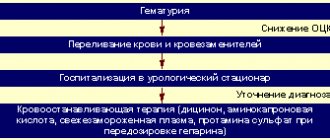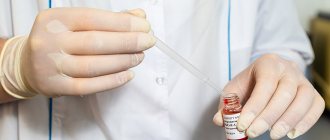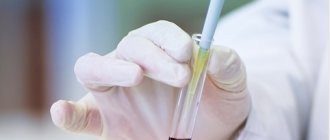Reticulocytes are young, immature red blood cells. Most of them are contained in the bone marrow, where the process of growth and differentiation of future blood cells occurs, but a small amount (up to 2%) circulates in the blood. Reticulocytes do not have a nucleus, but still contain residual RNA, which they lose within a day of leaving the bone marrow into the bloodstream. The number or percentage of reticulocytes in the blood is an important indicator of the functional state of the patient's bone marrow and its ability to produce erythropoiesis (red blood cells).
Normally, the life cycle of red blood cells in the body is about 120 days, and the bone marrow constantly produces new cells to replace aging ones. Typically, a stable number of red blood cells is maintained in the blood due to the constant renewal of their population. However, erythropoiesis and the number of red blood cells in the blood can be influenced by many external and internal factors - blood loss, hemolysis (destruction of red blood cells), various types of anemia. The body tries to compensate for the loss of red blood cells by releasing immature cells into the blood, due to which the number of reticulocytes in the blood increases.
A decrease in reticulocytes in the blood may be due to a number of other reasons, such as liver and kidney diseases, chemotherapy and radiation therapy, low levels of erythropoietin - the hormone responsible for the production of red blood cells, a lack of substances necessary for erythropoiesis (iron, vitamin B12, folic acid). In this case, the total number of red blood cells in the blood, hematocrit and hemoglobin also decrease, since the population of blood cells does not have time to recover at the required speed.
With increased production of the hormone erythropoietin, pregnancy, certain medications, and a condition called polycythemia vera, proportional growth of both young cells - reticulocytes and mature cells - red blood cells is possible.
In what cases is research usually prescribed?
A reticulocyte test is prescribed if:
- The results of a clinical blood test show a decrease in the number of red blood cells and/or a decrease in hemoglobin and hematocrit;
- The doctor wants to evaluate bone marrow function;
- The patient has signs and symptoms of anemia or chronic bleeding, such as paleness, weakness, fatigue, shortness of breath, blood in the stool;
- The patient is being treated for anemia;
- The patient is undergoing radiation or chemotherapy;
- The patient underwent a bone marrow transplant.
Decoding the results
The main reasons for increased reticulocyte levels:
- Significant blood loss.
- Destruction of red blood cells due to autoaggression of the immune system to blood cells,
- Malaria.
- Inflammatory processes.
- Recovery period after chemotherapy or radiation therapy.
- Malignant diseases of the hematopoietic system.
- Polycythemia of any etiology.
If the patient has a low level of red blood cells, and the number of young cellular elements is within normal limits, this speaks in favor of bone marrow diseases or a lack of erythropoietin. When treating anemia, an increase in the level of reticulocytes is a sign of the success of therapy.
Reasons for decreased reticulocyte levels:
- Iron deficiency, folate deficiency or B12 deficiency anemia.
- Tumors or metastatic lesions of the bone marrow.
- Chronic infectious diseases.
- Reduced thyroid function.
- Uremia.
- Consequences of chemotherapy or radiation therapy.
- Aplastic anemia.
- Kidney diseases.
What do the test results mean?
The results must be interpreted by your doctor and in conjunction with the results of other tests, such as a complete blood count. In general, the reticulocyte count (absolute number or percentage) is a reflection of recent bone marrow activity. The results may indicate the presence of a disease or condition that causes an increased need for new red blood cells and whether the bone marrow can cope with the increased load on it. Sometimes the results may indicate excess red blood cell production.
Reticulocytes are young red blood cells formed in the bone marrow and found in small quantities in the blood. They are a transitional form between the precursors of red blood cells in the bone marrow and adult red blood cells, which are found in large numbers in the bloodstream.
Synonyms Russian
Reticulocyte count, reticulocyte count, reticulocyte index.
English synonyms
Retic count, reticulocyte index, corrected reticulocyte, reticulocyte count.
Research method
Flow cytometry.
What biomaterial can be used for research?
Venous, capillary blood.
Units
*10^9/l (10 in st. 9/l), % (percent).
How to properly prepare for research?
- Eliminate alcohol from your diet for 24 hours before the test.
- Do not eat food 2-3 hours before the test (you can drink clean still water).
- Avoid physical and emotional stress 30 minutes before the test.
- Do not smoke 30 minutes before blood collection.
General information about the study
Reticulocytes are young red blood cells (erythrocytes). They are formed in the bone marrow when stem cells differentiate and divide to become adult red blood cells through the reticulocyte stage, gradually losing their nucleus and decreasing in size.
Newborns have more reticulocytes than adults.
Most red blood cells are already fully mature when they leave the bone marrow and enter the bloodstream, but 0.5-2% of those circulating in the blood are reticulocytes, which turn into adult red blood cells within two days. This test shows the number and percentage of reticulocytes in the blood and reveals the adequacy of red blood cell production by the bone marrow and the degree of its activity.
The body tries to maintain approximately the same number of circulating red blood cells; the normal lifespan of each of them is about 120 days. In this case, old red blood cells are destroyed in the spleen, and new ones are formed in the bone marrow. This process is regulated by erythropoietin, a hormone produced in the kidneys. In response to decreased oxygen levels in the blood, the kidney produces erythropoietin, which is then transported by blood to the bone marrow, where it stimulates the formation of red blood cells. As the red blood cell count increases, the production of erythropoietin in the kidneys decreases.
If red blood cells are destroyed (hemolysis) or their synthesis in the bone marrow is disrupted, anemia occurs. Also, its development is facilitated by the loss of red blood cells due to bleeding - then the body increases the formation of red blood cells in the bone marrow and the number of reticulocytes in the blood increases.
Damage to the bone marrow (eg, from a tumor, chemotherapy, or ionizing radiation) results in decreased production of red blood cells and the number of reticulocytes in the bone marrow and peripheral blood.
Insufficient production of red blood cells leads to a decrease in their circulation in the bloodstream, the amount of hemoglobin and the ability to carry oxygen. Accordingly, fewer reticulocytes are formed.
In turn, the number of reticulocytes and red blood cells increases with more active bone marrow function. This can occur for a variety of reasons, such as increased production of erythropoietin, a chronic disorder that increases the number of red blood cells (polycythemia vera), or smoking.
What is the research used for?
- For differential diagnosis of types of anemia, as well as to determine the activity of the formation of red blood cells in the bone marrow.
- To determine the severity of anemia, a general blood test should be performed along with this study, which evaluates the number of red blood cells and red blood cell indices, hematocrit and hemoglobin concentration.
When is the study scheduled?
- With a decrease in the total number of red blood cells, hemoglobin and other signs of anemia or suppression of bone marrow function. The main symptoms of this are: pale skin, increased fatigue, shortness of breath, blood in the stool (a sign of chronic blood loss).
- The analysis is also prescribed to monitor the treatment of patients with iron deficiency, vitamin B12 or folic acid deficiency, renal failure, and cancer.
- If the red blood cell count is elevated (to assess bone marrow function).
What do the results mean?
Reference values
- Reticulocytes,% (RET%)
| Floor | Age | Reference values |
| Female | Less than 2 weeks | 0,15 — 1,5 % |
| 2 weeks – 1 month | 0,45 — 1,4 % | |
| 1-2 months | 0,45 — 2,1 % | |
| 2-6 months | 0,25 — 0,9 % | |
| 6 months – 2 years | 0,2 — 1 % | |
| 2-6 years | 0,2 — 0,7 % | |
| 6-12 years | 0,2 — 1,3 % | |
| 12-18 years old | 0,12 — 2,05 % | |
| Over 18 years old | 0,59 — 2,07 % | |
| Male | Less than 2 weeks | 0,15 — 1,5 % |
| 2 weeks – 1 month | 0,45 — 1,4 % | |
| 1-2 months | 0,45 — 2,1 % | |
| 2-6 months | 0,25 — 0,9 % | |
| 6 months – 2 years | 0,2 — 1 % | |
| 2-6 years | 0,2 — 0,7 % | |
| 6-12 years | 0,2 — 1,3 % | |
| 12-18 years old | 0,24 — 1,7 % | |
| Over 18 years old | 0,67 — 1,92 % |
- Reticulocytes (absolute count, RET#)
| Floor | Reference values |
| Female | 17 - 63.8 *109/l |
| Male | 23 - 70 *109/l |
- Immature reticulocyte fraction (IRF)
| Floor | Reference values |
| Female | 3 — 15,9 % |
| Male | 2,3 — 13,4 % |
- Low fluorescence reticulocyte fraction (LFR): 83 - 97%.
- Average fluorescence fraction of reticulocytes (MFR): 2.9 - 15.9%.
- High fluorescence fraction of reticulocytes (HFR): 0 - 1.7%.
In a healthy person, the number of reticulocytes is generally stable. When the red blood cell count or hematocrit decreases, the percentage of reticulocytes may be elevated relative to the total red blood cell count—an artificially high reticulocyte count. So, for a more accurate assessment of the severity of anemia in such cases, it is better to use the reticulocyte index - determination of the absolute number of reticulocytes. This compares the patient's hematocrit with a normal hematocrit level.
The reticulocyte index is calculated by the formula: percentage of reticulocytes x hematocrit (an indicator characterizing the degree of blood thinning) / 45 x 1.85. In this case, an index of less than 2 will indicate a decrease in the activity of red blood cell production, and an index of more than 2-3 will, on the contrary, indicate an increase.
It must be remembered that the reticulocyte level reflects recent bone marrow activity.
Causes of increased reticulocyte levels
- Bleeding. If bleeding occurs, the reticulocyte level will rise after 3-4 days, which will indicate an attempt by the bone marrow to increase the production of red blood cells in order to replace their losses. With chronic blood loss, the level of reticulocytes will be persistently increased.
- Hemolysis (the rate can increase up to 300% of normal) is the destruction of red blood cells inside the body. It can occur for various reasons: due to a hereditary defect of red blood cells, as a result of the appearance of antibodies to one’s own red blood cells, or toxic effects in malaria.
- The result of anemia treatment. An increase in reticulocytes can be used as a criterion for the effectiveness of treatment of anemia, as well as the adequacy of the selection of the dosage of an iron supplement for iron deficiency anemia (an increase in reticulocytes occurs on the 8-12th day). When treating B12-deficiency anemia, the so-called reticulocyte crisis occurs on days 5-8, which indicates the adequacy of the prescribed treatment.
- Inflammatory processes.
- Bone marrow cancer or metastases of other tumors to the bone marrow.
- Polycythemia (increased hemoglobin and red blood cells) of any origin.
- Restoration of bone marrow function after chemotherapy or radiation therapy.
- Taking erythropoietin.
- If the bone marrow is unable to adequately produce red blood cells in response to increased demand, the number of red blood cells may be normal or slightly low, although it will eventually decline.
- If a patient is anemic and the reticulocyte count does not increase, this means that there is some degree of bone marrow dysfunction and/or erythropoietin deficiency.
Reasons for low reticulocyte levels
- Iron-deficiency anemia.
- B12 deficiency anemia or folate deficiency anemia.
- Alcoholism.
- Myxedema is a decrease in thyroid function.
- Aplastic anemia (consistently reduced reticulocyte levels - poor prognosis).
- Kidney diseases.
- Tumor involvement of the bone marrow or metastases of other tumors to the bone marrow.
- Chemotherapy or radiation therapy.
- Chronic infections.
- Uremia.
- Taking carbamazepine or chloramphenicol.
What can influence the result?
- In individuals who rise to high altitudes, the concentration of reticulocytes increases as their body adapts to the reduced oxygen concentration.
- In smokers and pregnant women, reticulocyte levels may be elevated.
- Antipyretics and levodopa increase the level of reticulocytes, while azathioprine, chloramphenicol, methotrexate, and sulfonamide drugs, on the contrary, decrease them.
general characteristics
Reticulocytes are immature red blood cells. They are formed in the bone marrow from precursor cells. Reticulocytes formed in the bone marrow remain there for up to 36-44 hours, and then enter the blood, where they mature for 24-30 years. and turn into mature red blood cells. Determination of reticulocytes is an important indicator reflecting the regenerative properties of bone marrow. When erythropoiesis accelerates, the proportion of reticulocytes in the peripheral blood increases, and when it slows down, it decreases. The main indications for determining reticulocytes in the blood are the diagnosis of anemia and assessment of the effectiveness of their therapy.
What else is prescribed with this study?
Clinical blood test with leukocyte count and ESR (with microscopy of a blood smear to detect pathological changes) (venous blood)
3.9.1. Ven. blood 1 day
460 ₽ Add to cart
Leukocyte formula with mandatory “manual” microscopy of a blood smear (venous blood)
3.5.1. Ven. blood 1 day
200 ₽ Add to cart
Westergren ESR (venous blood)
3.3.1. Ven. blood 1 day
170 ₽ Add to cart
Important Notes
Material for research Capillary blood.
Children under 7 years of age: venous blood/capillary blood (for special indications). Children over 7 years of age and adults: venous blood. Capillary blood collection for research is carried out only for children under 7 years of age (for special indications)! According to GOST R 53079.4-2008, indications for taking capillary blood are possible: in newborns, in patients with very small or hard-to-reach veins, with large-area burns, and in severely obese patients.








